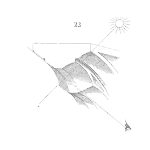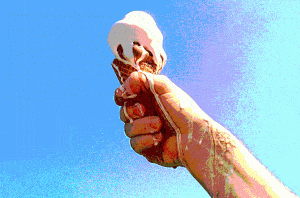
In May 2018, we sponsored a summit that brought electric power reliability leaders from all over the country to Houston to discuss the gap in reliability. I’ve had a few weeks now to reflect on the event, and I want to share those thoughts with you.
If SDMyers was the mother of the Electric Power Reliability Summit (EPRS), then I feel like I was the midwife.
Parents and midwives often have many questions about the baby before it is born. Will it be ugly? Will it sleep through the night? Who will take care of it in years to come? There were lots of questions about EPRS too (and, indeed, expectations) from our marketing group, from our sales group, and from leadership. We all shared variations of the same two questions, really: First, how many people would attend? And second, for would those who did come to the summit, what would they get out of it?
I was disappointed that there weren’t more reliability people keen (or aware) enough about the gap in electric reliability to come to the summit. But as far as information and content is concerned, the summit absolutely delivered, and the speakers each brought something worth hearing to the table.
We took a higher-order approach when we were putting the EPRS together. We decided to talk about where electrical system reliability fits in the whole scheme of corporate reliability. We had some of the most influential experts from the reliability field set the scene, and we were delighted to host Terry O’Hanlon (of ReliabilityWeb.com) on day one and Howard Penrose (Chair of the Society for Maintenance and Reliability Professionals) on day two as our keynotes.
We wanted EPRS to be different from other conferences. We wanted experts who are living electric reliability in their day-to-day operations to share their experiences and show us how it can be done. Dan Smith, of Austin Energy, did a magnificent job of showing us how the principles of electric power reliability apply to a very dynamic organization, one that serves a smart city which is among the fastest-growing cities in America with a very, very heavy focus on renewables. They also have a heavy focus on managing things differently from how they were managed in the past. Austin Energy is using all of the tools that everybody else talks about, and they have made reliability a key component of their organization. For them, safety is first, and the reliability of their systems second. Resiliency is their third. That’s going to be a big thing for next year.
Tony Dotson, from WestRock Paper, and Juan Rodriguez, from Gerdau Steel, spoke about how the culture of a corporation can change. They were at EPRS to show us how they got their organizations to look at a corporate reliability program for the high voltage system, and to share their struggles throughout the process.
When we conceived the EPRS we knew we wanted experts from every subfield of power system reliability. I work primarily with transformers, so if you ask me what makes up a high-voltage system I will probably talk to you about transformers. But an electrical system includes switchgear, breakers, relays, and cables, too. Every part of the system had an expert representative, and, in only a short period of time, each presented how their piece fits into the reliability of the system. We also had representatives from the insurance industry discuss risk, giving us a whole different perspective that is not always front-of-mind. What they all did was connect their separate disparate part to the whole, and people walked away getting that.

The consensus—and the main message, I think—is that power systems are at risk, but they can be protected. We were shown what you need to look at to protect them, and to see where the future of reliability is going.
For me, the most important takeaway from the summit was connections. People got to know each other and learn from each other and have conversations that were relevant to what they do every day. We want to keep those connections strong, and that’s going to be up to us to maintain that. Because if I feel like I am the midwife, and that the child is now birthed, we’re going to need a village to help raise it. And you know what? It’s not an ugly baby at all. In fact, it came out very pretty. I’m glad it’s here.
Several attendees have contacted me already to say they want to come next year, that they want to participate. We have support from the reliability organizations. In fact, we want this to impact our organizations, and we want to promote electrical system reliability because we never realized how much risk there was. You can see it in an article from Howard Penrose, when he talks about being at the EPRS. Electric reliability is one of the things that he’s committed to as the chairman of SMRP, and I believe that sentiment is a result, in part, of participating in the EPRS.
There was one oversight, however. One logistical thing that we need to address for next year. We had an ice cream social on the first night. An ice cream social on a hot, bright, sunny Tuesday evening in Houston, Texas. At 6 pm, we had ice cream. At 6:15 pm, we had buckets of cream. It was so hot. The ice cream melted. Fast. The idea of an ice cream social is that you get ice cream and you socialize, but it’s a little difficult to socialize with tepid cream running down your sleeve, or with a hot dish of cream soup in your hand.
Growing pains. Every baby has them.
 Ask a question or send along a comment.
Please login to view and use the contact form.
Ask a question or send along a comment.
Please login to view and use the contact form.
Leave a Reply